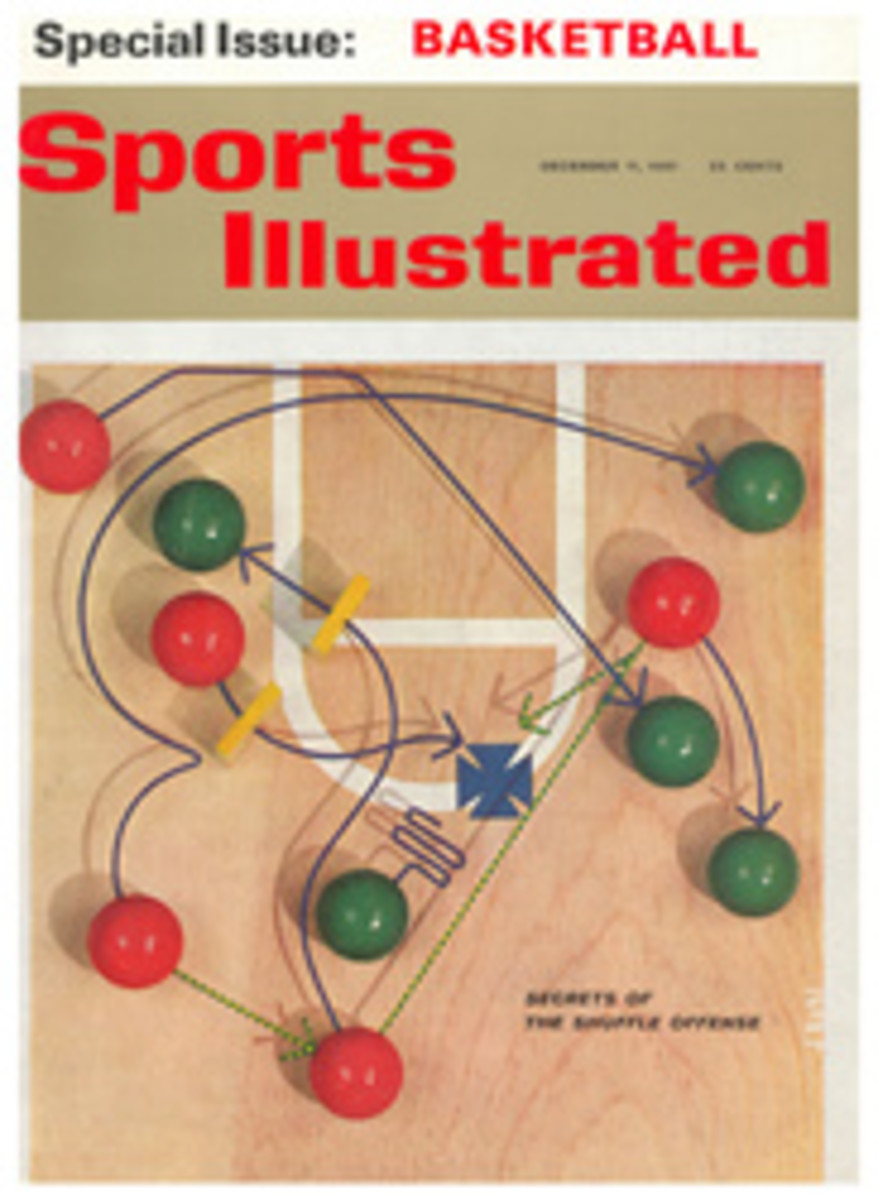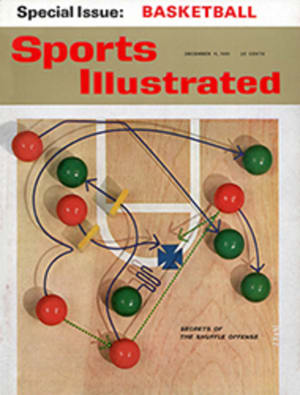
FIRST SALVO IN A SHOOTING WAR
Exactly 1 minute and 26 seconds after the game with Indiana State began in the banner-draped, packed field house of the University of Cincinnati last Saturday, a cat-quick giant named Dale Heidotting snared a teammate's rebound and slapped in a two-handed follow-up shot. With that, the National Champion Cincinnati Bearcats opened their defense of basketball's most coveted prize and ushered in what should be the finest collegiate season in the 70 years of this feverishly followed sport. Since last, season ended with the grim revelations of bribery and fixed games, it is especially meaningful and fortunate for basketball that the worst of times are now likely to be followed by the best of times.
The increased excitement over basketball this year—which has developed in spite of the scandals—is attested to by coaches from coast to coast. "At an early November meeting of southern coaches," says Georgia Tech's Whack Hyder, "there were many reports of record advance ticket sales."
"More great players are emerging than ever before, and creating more interest than they used to," says Dick Harp of Kansas. "Also, basketball powers are less sectionalized than ever. There has been a notable improvement in play in the Southeast in recent years. Now this has spread to the Southwest and southern California." These are two areas where indoor sports have rarely evoked large followings.
"We have the greatest interest of all time," says Southern California's Forrest Twogood. "It takes exceptional talent to create spectator enthusiasm and there is exceptional talent across the nation this year."
Coach Twogood is literally correct. Basketball talent has a way of running in good and bad years, like wine, and there has rarely, if ever, been a vintage crop to equal the seniors who are at the crest of their college careers this year. So many of them are so good that they will, en masse, give a new look to the professional NBA next season.
This year only two college graduates stepped into the starting lineups of NBA teams. But playing as seniors now are at least seven big men that any pro team would be glad to start tonight. They are Jerry Lucas, Paul Hogue, Billy McGill, John Rudometkin, Len Chappell, Dave DeBusschere and Terry Dischinger. What's more, with the considerable increase in intersectional scheduling, basketball fans are going to have numerous opportunities to see what happens when these court masters duel each other. An early, fine face-off comes this weekend, when Ohio State's Lucas meets Wake Forest's Chappell. Utah's McGill, USC's Rudometkin, Purdue's Dischinger and Lucas will all be competing three weeks later in what may well be the best holiday basketball tournament ever held, the Los Angeles Classic. In short, basketball is now being scheduled more and more like football, with the best teams competing against each other in surefire spectacles (which should be surefire successes at the gate).
As outstanding as the game may prove to be this season, the cloud of the scandal still hangs over it. The trials of the fixers are presently in progress, and, to date, New York District Attorney Frank Hogan has revealed a total of $71,650 in bribes offered to 18 players from 10 schools to fix 49 games. After these trials, there will be new arrests and disclosures of other fixed games that took place last season.
The scandals resulted in a variety of preventive measures and changing attitudes. Hard-hit North Carolina and North Carolina State cut their schedules to a mere 16 games and canceled the popular Dixie Classic Tournament. In January the National Collegiate Athletic Association will act on a 16-point program that ranges from the stiffening of academic requirements for athletes to a request for federal and state laws on bribery and game-fixing. And as colleges began fall practice the coach's annual pep talk was replaced by lectures from local district attorneys or FBI agents on the gambling menace.
Finally, the most knowing and responsible coaches in college basketball were taking a hard look at the high-pressure recruiting that had abetted, if not caused, the scandal. "Offering any scholarship inducement beyond the usual grant-in-aid is just as bad as shaving points," said Missouri Coach Sparky Stalcup, president of the National Association of Basketball Coaches.
"All the trouble stems from the over-zealous recruiting some people have been guilty of," said Doc Hayes of SMU.
"The problem to be attacked within the colleges is that of illegal aid and out-of-state recruiting," said Pete Newell, who coached a national championship team at California before becoming athletic director there. "Mr. Hogan must be given credit for making his disclosures before this became a game-killing eruption. Some good will come of this in the field of recruiting."
Thus the NCAA, the colleges and the coaches appeared to have learned some lessons from last year's corruption. "The scandals," summed up Whack Hyder as the new season began, "were shocking and alarming. But we who are dedicated to basketball and the young men who play it have no doubt about the future of the game. The outlook has never been better."
Now turn the page for a warm, colorful and discerning look at the way basketball grips both young and old in the section of the country that takes it most seriously of all.
PHOTO
CINCINNATI'S RON BONHAM, WHO MAY BE THEIR BEST SHOOTER SINCE OSCAR ROBERTSON, FIRES ONE IN OPENING GAME AGAINST INDIANA STATE

